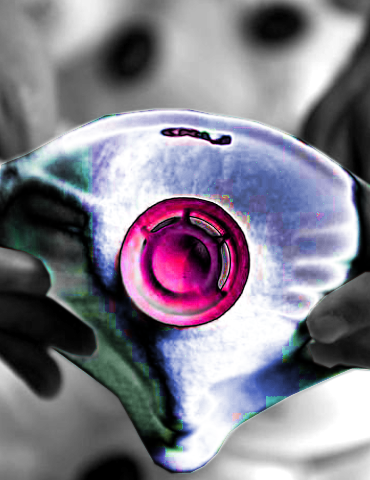Viral alarm mask tested
 Chinese scientists have created a face mask that can alert the wearer if they have been exposed to viruses.
Chinese scientists have created a face mask that can alert the wearer if they have been exposed to viruses.
The highly sensitive mask can alert wearers via their mobile device within 10 minutes if targeted pathogens are present in the surrounding air, and has been set up to detect common respiratory viruses, including influenza and coronavirus. The masks feature a small sensor with aptamers, which are a type of synthetic molecule that can identify unique proteins of pathogens like antibodies.
In their proof-of-concept design, a team from Tongji University modified the multi-channel sensor with three types of aptamers, which can simultaneously recognize surface proteins on SARS-CoV-2, H5N1, and H1N1.
Once the aptamers bind to the target proteins in the air, the ion-gated transistor connected will amplify the signal and alert the wearers via their phones.
An ion-gated transistor is a novel type of device that is highly sensitive, and thus the mask can detect even trace levels of pathogens in the air within 10 minutes.
Respiratory pathogens that cause COVID-19 and H1N1 influenza spread through small droplets and aerosols released by infected people when they talk, cough, and sneeze. These virus-containing molecules, especially tiny aerosols, can remain suspended in the air for a long time.
In recent tests, the new mask was placed in an enclosed chamber and sprayed with a viral surface protein containing trace-level liquid and aerosols.
The sensor responded to as little as 0.3 microliters of liquid containing viral proteins, about 70 to 560 times less than the volume of liquid produced in one sneeze and much less than the volume produced by coughing or talking.
“Our mask would work really well in spaces with poor ventilation, such as elevators or enclosed rooms, where the risk of getting infected is high,” says Dr Yin Fang, the study’s corresponding author.
In the future, if a new respiratory virus emerges, they can easily update the sensor’s design for detecting the novel pathogens, he adds.
Next, the team hopes to shorten the detection time and further increase the sensitivity of the sensor by optimising the design of the polymers and transistors.
They are also working on wearable devices for a variety of health conditions including cancers and cardiovascular diseases.
“Currently, doctors have been relying heavily on their experiences in diagnosing and treating diseases. But with richer data collected by wearable devices, disease diagnosis and treatment can become more precise,” Dr Fang says.
More details are accessible here.








 Print
Print